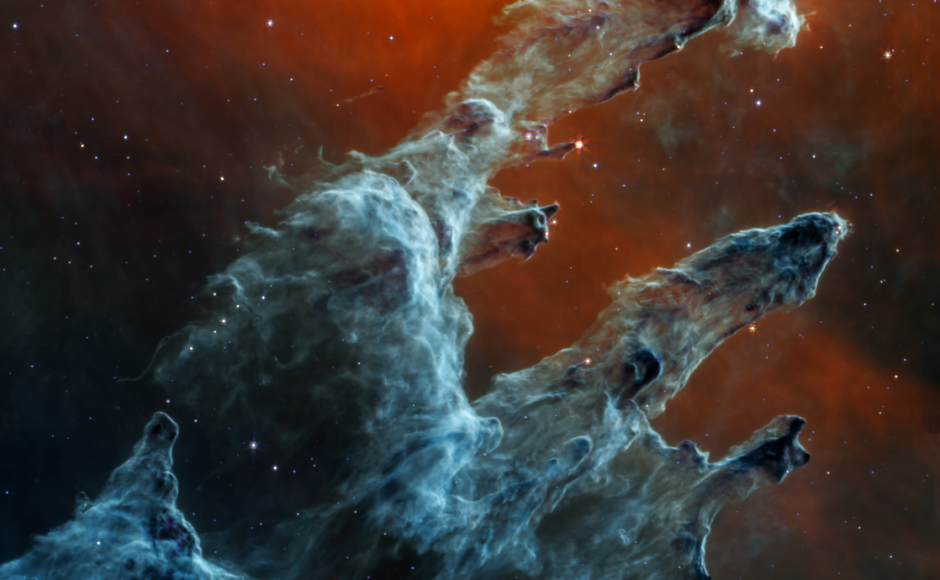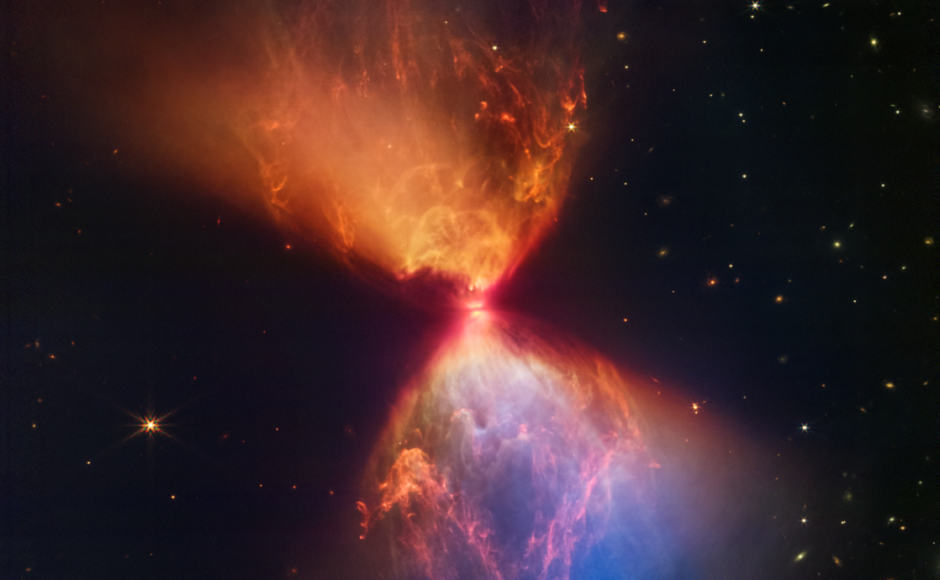The views expressed in our content reflect individual perspectives and do not represent the authoritative views of the Baha'i Faith.
Baha’u’llah, the founder of the Baha’i Faith, asked humanity to “Be anxiously concerned with the needs of the age ye live in” – but I fear I may have gone beyond the bounds of moderation on that score.
During the past several years in the United States – a time of great disunity, polarization, and conflict – I admit that I became something of a news junkie, mainlining cable news for a few evening hours each day. Because I wanted to understand a range of reporting on the crucial issues facing my country and the world, and get a spectrum of opinion and emphasis, I watched and listened to different news channels and programs. I read newspapers spanning the editorial spectrum from right to left, and kept up, too, with various online newsfeeds.
RELATED: Is the Universe Ordered or Chaotic?
But I overdid it. After a couple of years of that compulsive media consumption, I definitely became even more anxiously concerned – or maybe just more anxious, period.
It turns out that contemporary psychology has come up with a few recently-coined names and acronyms to describe this new news-devouring syndrome: NIA, “news-induced anxiety;” or HSD, “headline stress disorder.” Those syndromes and what they identify prove we’ve entered an era of difficult and even grueling news cycles, which can trigger intense emotions along with feelings of powerlessness, despair, and deep, pessimistic anxiety about the future. Does that sound familiar?
Many people have felt those feelings. Negative media stories about mass shootings, political unrest, war, racism, conflict, hatred, climate change, genocide, species extinction, and governmental corruption pile up, coming faster and faster, until our minds and psyches reach a tipping point, and we spiral into foreboding despondency. We feel disoriented, devalued, depressed, and unsafe. Without a wider perspective, a countervailing spiritual sense of optimism, and some hope for the future, our despair only worsens as we take in more and more bad news.
So what’s the solution? Should we go cold turkey and avoid all news reports, like some people I know? Should we stick our heads in the sand? No – but I do have a suggestion for a curative countervailing practice that has proven highly effective for me. Plus, it’s fun, completely free, available to just about everyone, and has no negative side effects.
Simply, I recommend saying a Baha’i prayer, then going outside at night and looking up at the stars.
Rather than taking in more death, doom, and disaster (which of course drives the ratings of many news outlets, which means the more we watch the more their profits increase) why not moderate your news intake, limiting it to a shorter period each day, and spending the rest of your precious and limited time contemplating the eternal?
When you do, you’ll thank your lucky stars.
Here’s the Baha’i prayer, written by Abdu’l-Baha, that I often say before I head out for my cleansing nightly star-shower:
He is the Compassionate, the All-Bountiful! O God, my God! Thou seest me, Thou knowest me; Thou art my Haven and my Refuge. None have I sought nor any will I seek save Thee; no path have I trodden nor any will I tread but the path of Thy love. In the darksome night of despair, my eye turneth expectant and full of hope to the morn of Thy boundless favor and at the hour of dawn my drooping soul is refreshed and strengthened in remembrance of Thy beauty and perfection. He whom the grace of Thy mercy aideth, though he be but a drop, shall become the boundless ocean, and the merest atom which the outpouring of Thy loving-kindness assisteth, shall shine even as the radiant star.
Shelter under Thy protection, O Thou Spirit of purity, Thou Whom art the All-Bountiful Provider, this enthralled, enkindled servant of Thine. Aid him in this world of being to remain steadfast and firm in Thy love and grant that this broken-winged bird attain a refuge and shelter in Thy divine nest that abideth upon the celestial tree.
“As above, so below,” the venerable wisdom reminds us, and Abdu’l-Baha, in his book Some Answered Questions, also reminds us that this glorious physical universe is a reflection of the spiritual one:
… in this universe of God’s, which appears in the utmost perfection, beauty, and grandeur, the luminous bodies of the material universe are infinite. Pause to infer, then, how infinite and unbounded the spiritual realms of God, which are the spiritual foundation, must be!

Want to give it a try? It’s easy. To begin doing what I call “universal therapy,” choose a cloudless night, find a place where you can see the stars – urban dwellers plagued by smog and light pollution will need to decamp to the countryside – lean back or lie down, get comfortable, and direct your eyes skyward. Do that for one hour. (Most human pupils don’t fully adapt on a dark, moonless night until 30 minutes have passed.) Be patient. Just look. Drink in the vastness, the brightness, the darkness, and take in the wellness they offer. Imbibe the universe.
RELATED: In Our Fine-Tuned Universe, Does Life Exist on Other Planets?
You’ll be amazed by what you’ll see: endless suns, bright planets, shooting stars, the edge of our Milky Way Galaxy, the rapid transits of more than 5,000 Earth-orbiting satellites, the massive, stunningly luminous International Space Station flying by at 17,000 miles per hour while it circles the planet every 93 minutes, and most importantly, the infinite, imperturbable reaches of this gorgeous, mysterious, far-flung creation we call the cosmos.

Do not get one of those apps that identify the stars by name as it displays them on your phone, or a telescope that gives you a close-up (but very narrow) view, or any other explanatory/scientific guide or device. Save those for later. Instead, try to widen your vision and take it all in at once.
That’s what the ancients did. Indigenous people received their news from friends and family around the campfire, then, when the flames dwindled after dinner, gazed up into the astral plane. They based their primary stories and myths on what they witnessed in the heavens. Constellations got their names and their tales from the star-gazers of ancient Middle Eastern, Greek, and Roman cultures. In fact, human imagination itself likely began when we first looked up and saw something larger and more mysterious than our selves or our immediate surroundings.
Today, we can do the same, with the benefit of more scientific knowledge and the added attractions of accurately-calendared meteor showers, satellites, and space stations. We can now know, down to the dates and directions, when shooting stars will descend into the Earth’s atmosphere and light up the night sky.
This kind of universal therapy isn’t just my personal recommendation – many psychologists have recognized the value of our inherent spiritual connection with the natural beauty and wonder the universe can awaken in human hearts.
Gazing into eternity – which is literally what we do when we practice universal therapy, because the light from distant stars takes millions of years to reach us – we can make a profound spiritual connection with creation. We can mitigate the impact of the daily, earthly, and frankly temporary, firehose of negative news events, by focusing our attention on the eternal. We can separate the transitory from the transcendent. We can look deeply into the past and envision the future. Yes, the news is important, but none of us will consume it indefinitely. It will continue to happen long after we’ve moved on. When our time comes to make our move from this material plane to the spiritual one, universal therapy will help our souls be ready for the journey.

If we ponder the stars and the planets on a regular basis, it’s been my experience that they can give us great peace and never-ending delight and a lasting sense of the numinous. Looking out into the universe can even provide us with a view into our own selves.
The other night, reclining and watching the stars from my porch about an hour after sunset, I saw something unusual – it looked initially like a very large meteor slamming into Earth’s atmosphere. It lit up the entire night sky above me. Then, surging forward at an incredible speed, it began to break up into smaller pieces, each one of them a glowing meteorite in an illuminated stream of flaming falling fragments. It looked like a freight train on fire, streaming across the dark sky. I literally gasped. A meteor? An asteroid? A failed satellite returning to Earth? I don’t know, but I do know that most of the people on our planet missed it, and that what I witnessed gave me the great gift of a sense of awe and astonishment and spiritual inspiration that I doubt I’ll ever get watching the news.

















Comments
Sign in or create an account
Continue with Facebookor